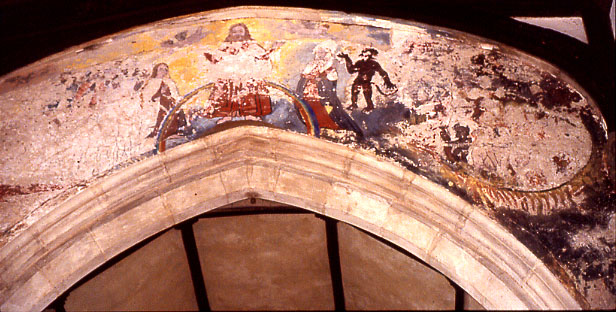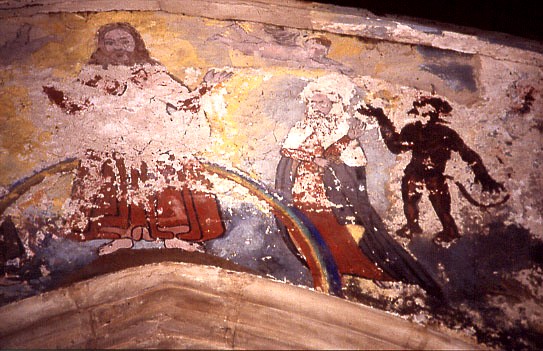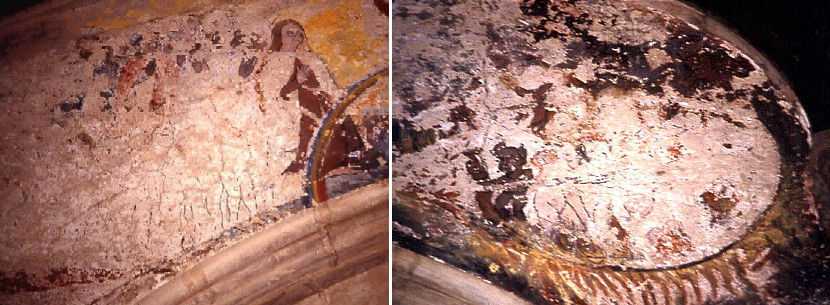Chelsworth, Suffolk (†St Edmundsbury & Ipswich) C.15
Doom

This large Doom owes its colourful aspect to an over-enthusiastic Victorian restoration, probably using oil-based paint, some of it now badly affected by flaking. But it is an interesting painting nevertheless, not least because of the placing of a dark brown devil shown in a challenging attitude beside a white-bearded St Peter, holding his key and very unusually shown here in the position normally taken by St John. Peter seems to be calling attention to this figure with an upraised hand, and it is certainly unusual for a devil to be shown in such close proximity to the Judging Christ At the top of the painting, rather pale against the background, an angel is shown in horizontal flight towards the devil, presumably to check his encroachment and fight off his challenge. The oversaturated colours and too-heavy outlines of the restoration, especially on the folds of Christ’s robe, are very evident here.

Little survives on the left, but the kneeling Virgin and a group of risen dead (detail, below left), largely reduced to outlines of their legs, are still visible. What looks like a pair of upraised hands, the left fairly clear, painted in dark grey to the left of the Virgin may be a misleading detail introduced by restoration – it is very hard to be sure. On the right hand side, Hell is also damaged and obscure in parts, but the outline of the Hell-mouth (below, right), with a fiery-looking beard painted in yellow is still clear.
Inside the mouth, a group of the damned, and a linked chain surrounding them, can just be seen, and so can a small, squat, brownish-black devil with small horns who is probably hauling on the end of the chain. This devil may also be brandishing something – I would like to think that it is the jug belonging to a fraudulent ale-wife who sometimes features in Doom paintings, but that may be wishful thinking.

This was probably once a more skilled painting than appears now after the garish restoration. But, as so often with this subject, it is the small, local details – the encroaching devil, perhaps claiming what he regards as his legitimate prey, and the flying angel about to do battle with him, that help to show how Death, Hell, Heaven and Judgement were presented to worshippers in the English rural church.